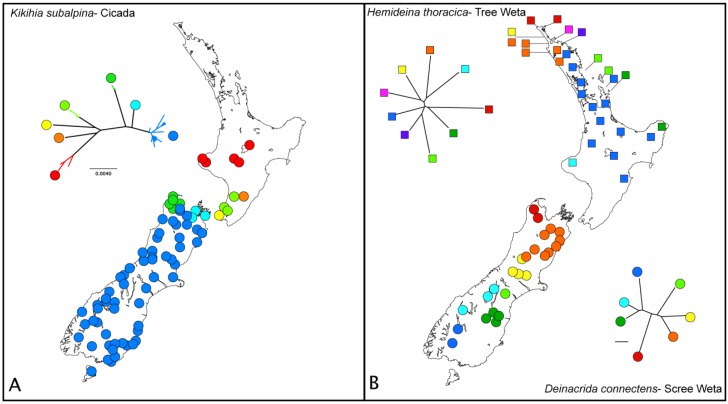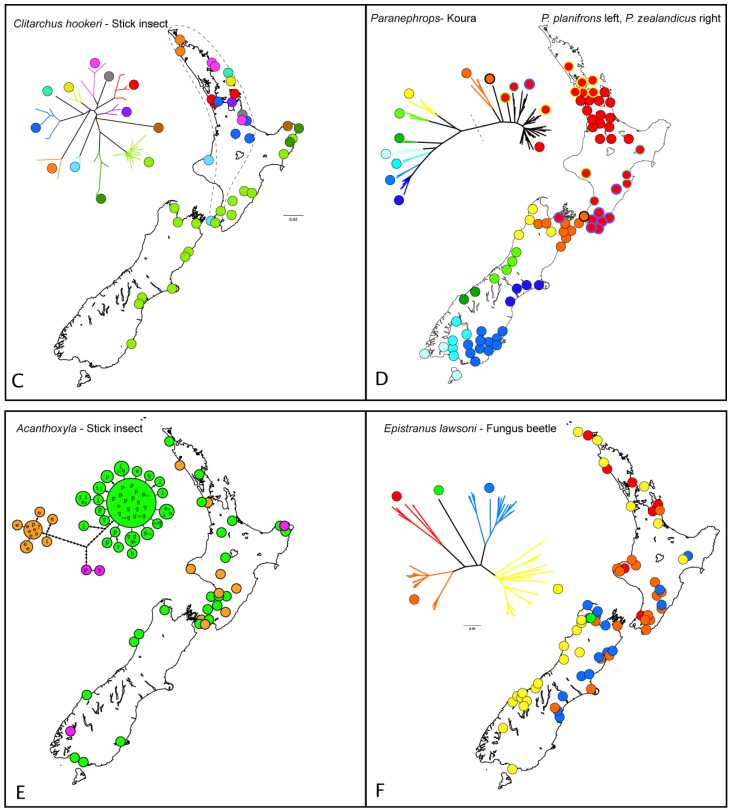Figure 7.
Exemplars of phylogeographic patterns revealed in species of New Zealand invertebrates. In each case mtDNA lineages are color coded and mapped, with cooler colors (blue, green) to south and warmer ones (reds) to north. Trees for A, C and F inferred using Neighbor-Joining of HKY distances in Geneious Pro v5.3.4 with mtDNA COI sequences download from GenBank; tree topology did not differ significantly from that originally reported. (A) Cicada Kikihia subalpina [59]; (B) Tree weta Hemideina thoracica only major mtDNA lineages for each species are indicated here [61], scree weta Deinacrida connectens [37]; (C) Within the stick insect Clitarchus hookeri [62], lineages associated with sexual populations are multicolored within dashed line whereas green populations are parthenogenetic; (D) The two New Zealand koura or freshwater crayfish Paranephrops are partitioned north and south, tree redrawn as above [47]; (E) Maximum parsimony network of the stick insect genus Acanthoxyla comprises numerous parthenogenetic morphospecies: e A. inermis, P A. prasina, i A. intermedia, g A. geisovii, Sp A. speciosa, Stt A. suteri, nrg A. nr geisovii (Myers et al. subm). Refer to Table 2 for data details; (F) The fungus beetle Epistranus lawsoni is likely to include cryptic species, tree redrawn as above [51]


